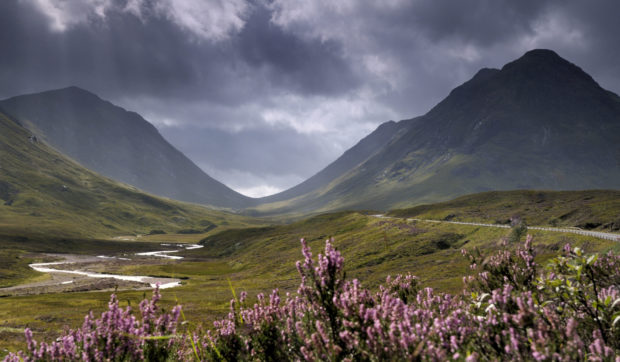A historian has hit out at the “arrogance” of the National Trust for Scotland (NTS) accusing the organisation of “misleading” the public over its proposed £300,000 lost villages project.
Rosalind MacDonald, who has studied the history of the Glencoe and the surrounding area in great depth over the years, has hit out at claims made by the NTS about the villages reportedly lost to the Highland clearances.
Mrs MacDonald claims that no clearances ever took place in the area and the three ‘forgotten’ villages that are being focused upon were not villages, but instead smaller settlements.
Mrs MacDonald said: “I have studied the clans and clearances in great depth during my studies in Aberdeen and beyond and I can assure them that no clearances ever took place in Glencoe.
“They are asking for £300,000 to do all of this on the Glen when really they are misleading the public.
>> Keep up to date with the latest news with The P&J newsletter
“There were never villages in the areas they are talking about. Achtriochtan, Achnacon and Inverigan were not villages but instead smaller hamlets.
“They do not know the history of Glencoe and they certainly shouldn’t be meddling with the history of Glencoe.
“It is the desperation of the NTS to get the public interested but it is not right that they get away with misleading them in this way.”
As part of the project, archaeologists working on behalf of NTS plan to excavate the three villages which now lie under grass and heather, as well as recreating a traditional turfed home.
NTS also claim that one of the villages, Achtriochtan, was home to approximately 60 people.
The Trust believes that the project will provide a new insight into the time surrounding the Highland clearances, with the potential to uncover more information relating to the massacre of Glencoe – the glen’s most infamous and tragic episode.
A spokeswoman for NTS stressed that the project is still at the development stage and that any development would be built near to the existing visitor centre – which recently opened following a £1million investment – and not at the original locations.
The NTS spokeswoman said: “These plans have been developed by the Trust’s Archaeology Team who know the area very well.
“They’ve used General Roy’s map which dates from the mid-18th century to identify areas of interest. This shows a number of groupings of buildings, the largest is at Invercoe and seems to show 11 structures.
“The team have also carried out extensive archaeological investigations at Achtriachtan and found evidence of at least five buildings there.
“The project will, we hope, give us a better understanding of how and why settlement patterns changed over the centuries and this all part of our work to share the facts, folklore and atmosphere of Glencoe with visitors from near and far.”
